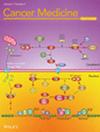Optimizing the Follow-Up Interval After Successful Cold Knife Conization of CIN3: A 10-Year Retrospective Cohort Study
Abstract
Background
This study was conducted to identify the risk of residual or recurrent high-grade squamous intraepithelial lesions or worse (HSIL+) in patients with successful conization and to develop a customized management strategy.
Methods
This retrospective study included 939 patients who underwent cold knife conization (CKC) for cervical intraepithelial neoplasia 3 at a hospital in China between January 1, 2013 and December 31, 2020. Demographic characteristics and test results were obtained before and 6, 12, and 24 months after CKC and annually thereafter. Human papillomavirus (HPV) persistence was defined as HPV positive at both 6 and 12 months after CKC, and the primary endpoint was residual or recurrent HSIL+ after CKC.
Results
The mean follow-up period was 68.8 months. In total, 61 (6.5%) patients had HPV persistence, and 19 (2.0%) had residual or recurrent HSIL+. The risk of residual or recurrent HSIL+ was increased in patients with HPV infection at 6 months (hazard ratio [HR], 84.6; 95% confidence interval [CI], 11.2–641) and 12 months (HR, 214; 95% CI, 28.1–1625) after CKC, and HPV persistence after CKC (HR, 244; 95% CI, 32.2–1854). Comparing two different colposcopic referral criteria for HPV persistence and HPV positive 6 months post-CKC, substantially fewer colposcopies were performed per case of residual or recurrent HSIL+ detected in patients with HPV persistence after CKC (3.39 vs. 8.28).
Conclusions
The risk of residual or recurrent HSIL+ was higher in patients with HPV persistence after CKC. In patients with negative margins, extending the follow-up interval to 12 months may reduce the number of HPV tests and colposcopy referral rates while maintaining HSIL+ detection.


 求助内容:
求助内容: 应助结果提醒方式:
应助结果提醒方式:


